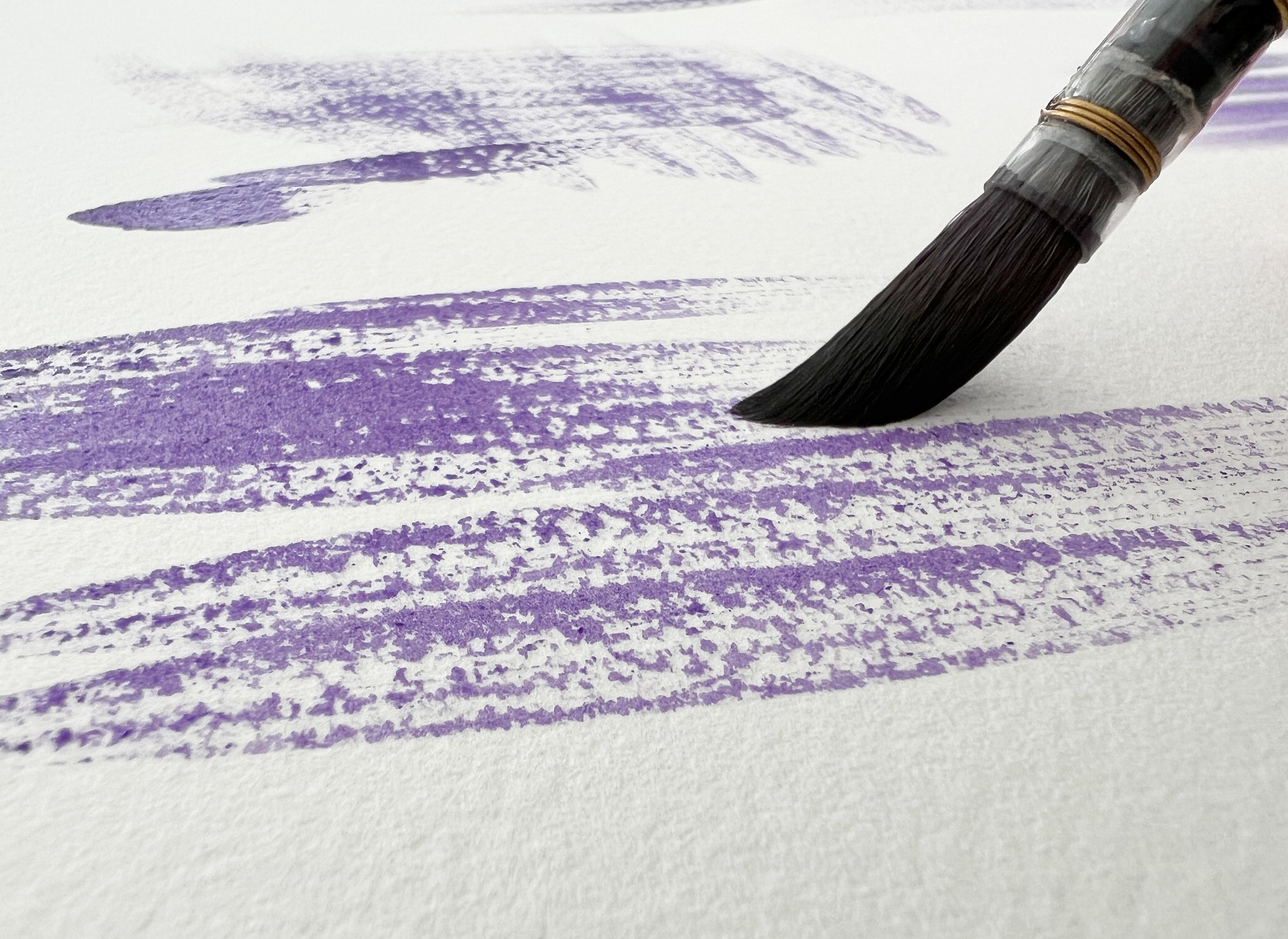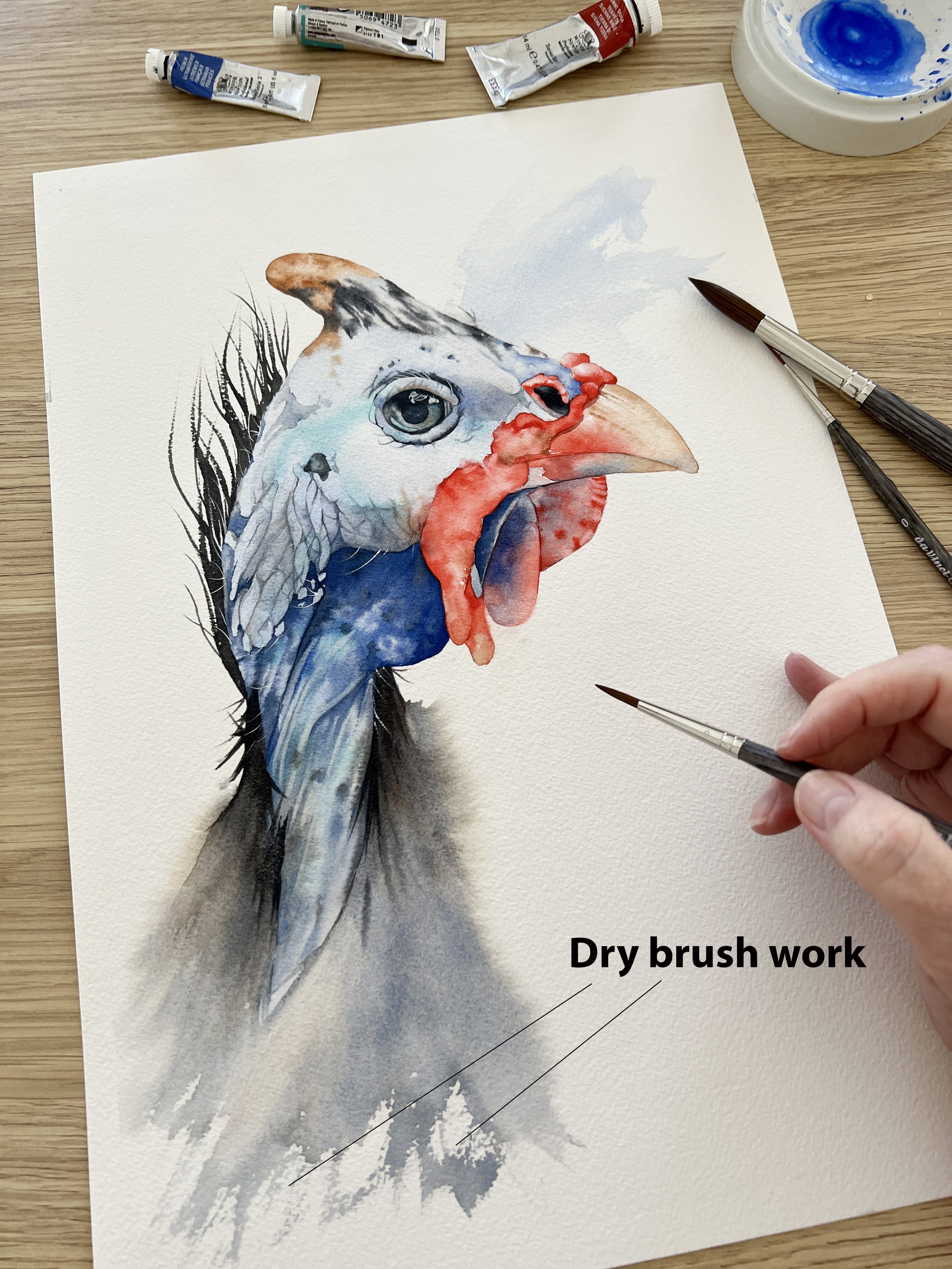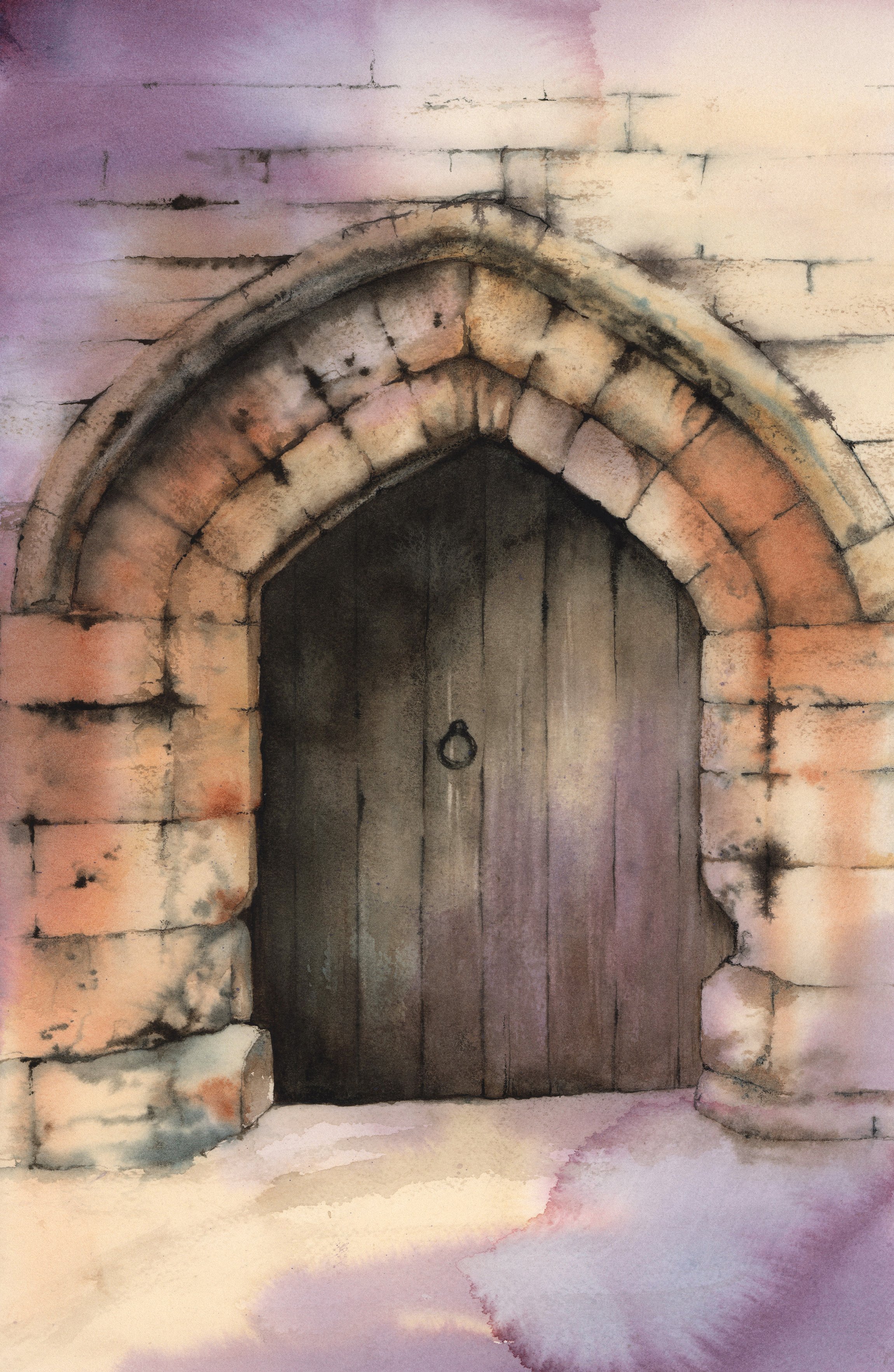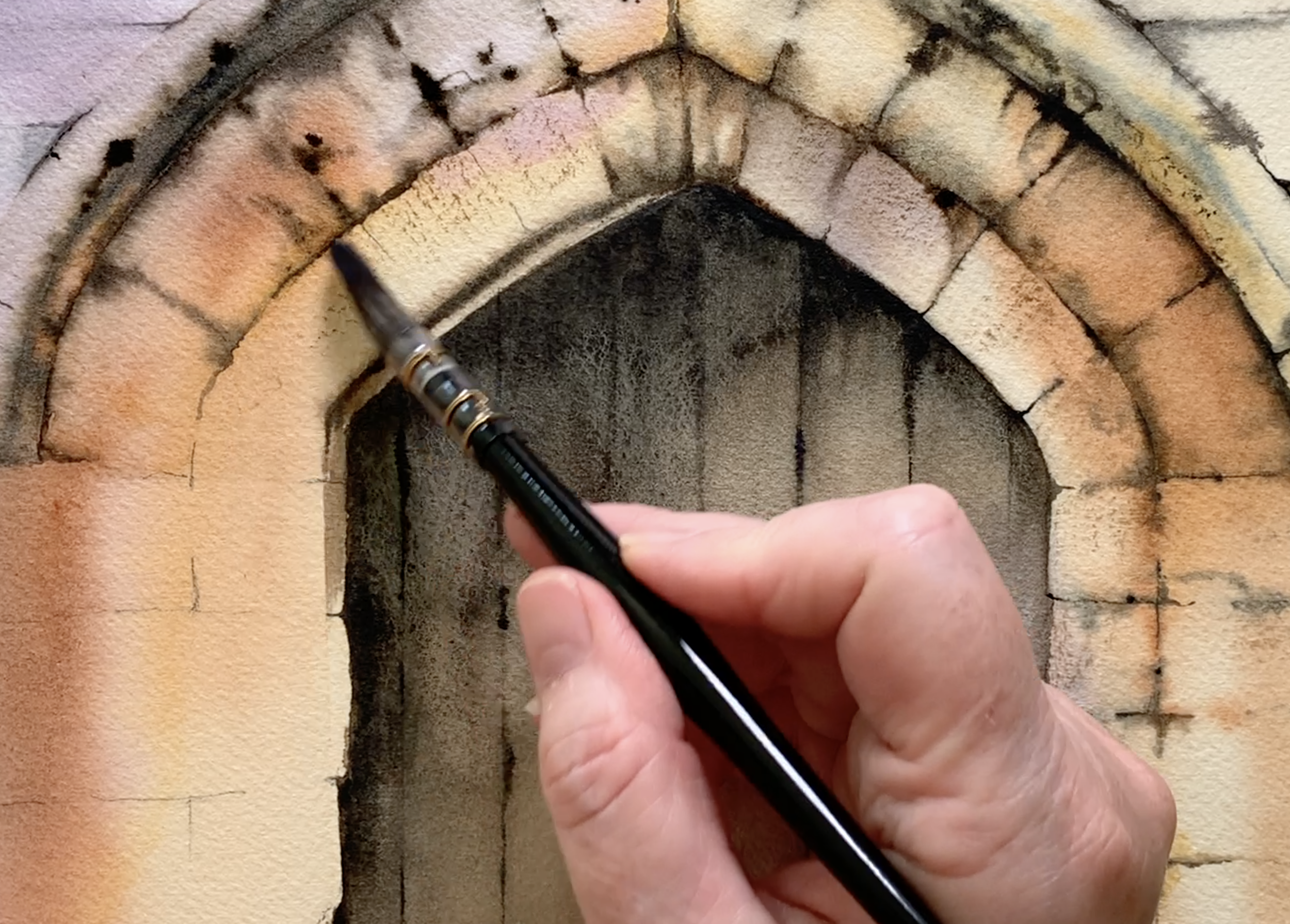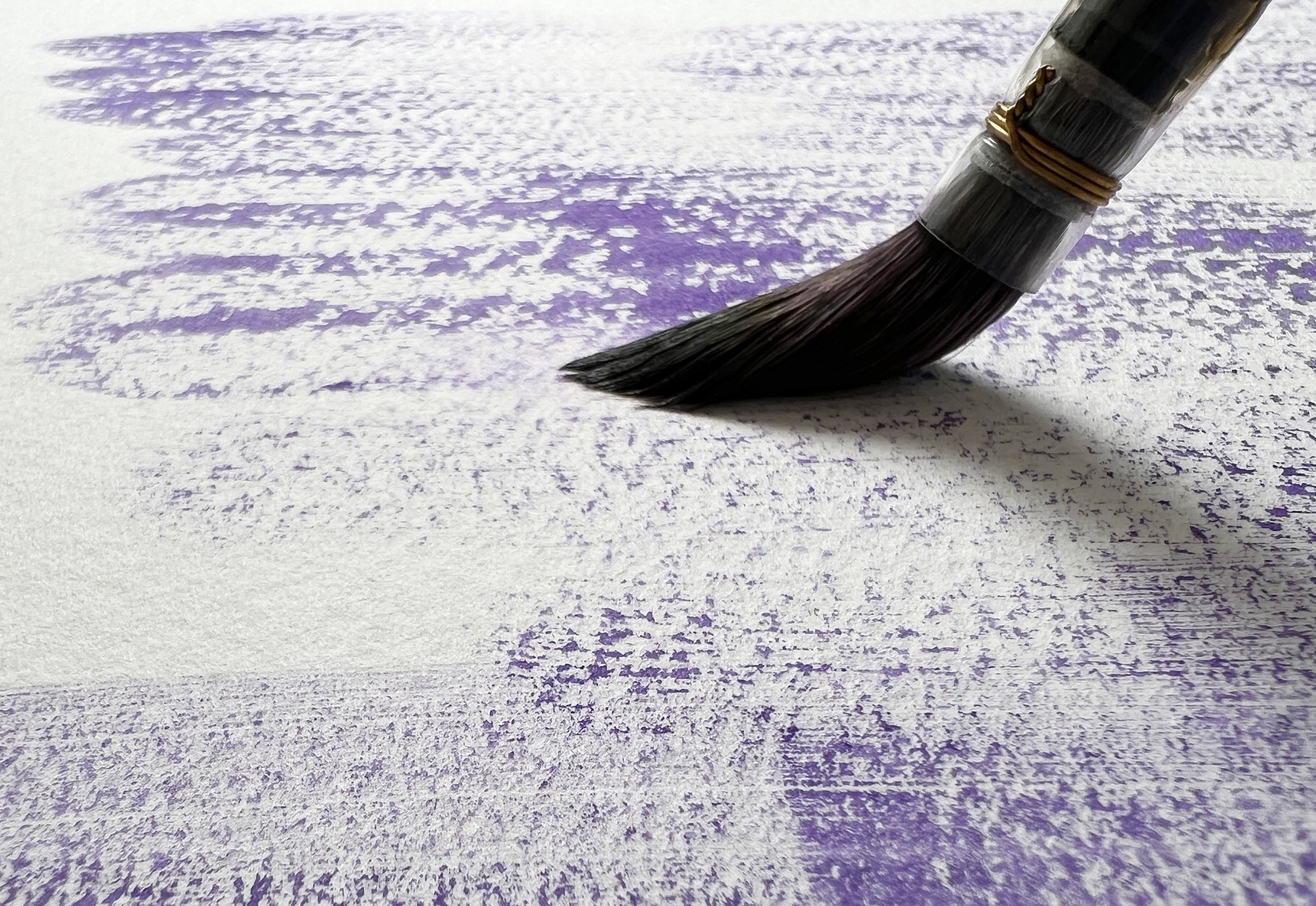What is Dry Brushing in Watercolour?
The dry brush technique in watercolour painting is where a moist brush is used to create textured and broken brushstrokes on the paper surface.
Typically, a small amount of paint is used, and this technique involves working on dry paper. By using a light touch you can create interesting textures, add highlights and depict details.
So, after reading that, let me guess……. the question on your lips is, ‘Why is it called dry brushing if you use a moist brush, why not call it moist brushing?’
Good question.
It’s called ‘dry brushing’ because of the minimal amount of paint used and the technique's characteristic dry-looking application on the paper.
Good answer?
How do you do the dry brush technique?
The dry brush technique is an expressive way to paint. So when you use it, you need to let go of your inhibitions and relax…..just breathe. It produces a random effect that you can’t really control.
It's not an easy technique to do, and it requires practice.
The moisture level in the brush is crucial. It should be wet when you pick the paint up, but not too wet. Dab your brush on a cloth after you load it with paint but don’t dab too much of the paint off.
If your brush is too wet it will transfer too much paint to the paper and you won’t get a textural effect.
If it is too dry, the brush will skip over the paper and not leave much of a mark.
Finding that sweet spot, where the amount of moisture is just right, is the hard part.
The amount of pressure on the brush is also essential. If you apply too much pressure, the brush might release too much paint at once and it will not produce the dry brush effect.
It's important to maintain a swift brush movement while dry brushing, as extended contact with the paper can cause excessive paint release. Also don’t use a really small brush- the bigger the better.
Here’s a closer look at dry brushed marks on the paper. In some areas where the paper is higher (the hills), you can see that the paint is sitting on the paper but in the lower areas of the paper (the valleys), the paint selectively skips over and doesn’t touch it.
You can dry brush on white paper and you can dry brush over painted areas to create more texture.
Here on this Guinea Fowl painting I wanted to create some texture on the feathers on the neck so I dry brushed on the white paper.
On this castle door painting I dry brushed over an area that had already been painted, to add some texture to the brick work.
You can also use the dry brush technique and then, when the paint is dry, gently glaze over the top with another colour.
Glazing a colour over the top of dry brushed area
How to hold your bush when you dry brush?
If you are using a round brush, use the side of the brush not the tip.
Sometimes I’ll use the side of a round brush and if I’m using a mop brush (pictured below) I will squash the tip down and flatten out the bristles.
This mop brush is a Da Vinci Casaneo.
What paper is best to use?
The best results with dry brushing are usually on paper that has some texture.
Hot press is smooth - so maybe it’s not a good choice. I have used the dry brush technique on hot press paper and the brush did skip over the surface but better results are achieved on textured paper.
Cold press and rough watercolour paper both have some tooth so they are the best choices for doing dry brush work.
What do you use the dry brush technique for?
The dry brush technique in watercolour painting is used to create texture. You can use it to suggest foliage or grass, you can create rough surfaces such as rocks or bricks. It can also be used when you are painting hair on a portrait and you can even use it to create the shimmer on water or the texture on land. I have used it to create the texture on feathers. It has many uses. It's a versatile technique that adds a unique visual appeal to watercolour paintings
Final dry brushing tips
Use the dry brush technique sparingly because it can overpower a painting.
Try out your freshly loaded brush on a spare piece of paper before you touch your painting to make sure it’s loaded correctly.
Practice! It’s not an easy technique to master and it requires persistence and confidence to make expressive marks that add interest to your painting.
So, I hope you will give dry brushing a go on your next watercolour painting and remember…….if at first you don’t succeed……dry, dry again!
I have a tutorial on Patreon where we focus on the dry brush technique and do some practice exercises.
Further reading: Wet on Wet Watercolour Technique.
